Biomedical Advances from Past Battlefields
It seems appropriate to begin this discussion on the 150th anniversary of the Battle of Antietam, often called the bloodiest day in U.S. military history. Why? because the American Civil War is seen by many military historians to be the first conflict of the modern era, a war that harnessed the entire resources of its combatants, and a war that was more destructive to human life than any previously fought. But during the war medical treatment of the sick and wounded dramatically changed. How?
1. Anesthesia was incorporated into surgical procedures.
2. Treatment of chronic pain led to a new science, neurology.
3. Triage was instituted to care for the wounded and sick.
4. Ambulance systems shunted the wounded from battlefields to hospitals.
5. Doctors started looking at the issue of cleanliness when treating wounds and disease.
But by no stretch of imagination was the Civil War an environment in which hygienic practices flourished. For every soldier who died from a battlefield wound, two succumbed to dysentery, diarrhea or other infections diseases. But after the war the lessons learned on and near battlefields were transferred to civilian medical practice.
From 1914 through 1918 a European war expanded to become the war we know as World War One. The carnage wrought by early 20th century weaponry produced human conditions never described before. For biomedicine whole new advances occurred to deal with the consequences of battle. These included:
1. The evolution of psychiatry to deal with war neuroses such as shell shock (what we call today Post Traumatic Stress Disorder or PTSD).
2. The development of the techniques for blood matching, blood storage and blood transfusions.
3. Advances in prostheses to replace limbs lost in battle (between 1914 and 1921 over 41,000 British solders lost at least one limb from combat injury).
4. Advances in plastic and restorative surgery to deal with severe facial injury.
5. Debridement of battlefield wounds to treat against bacterial infections.
6. Developments in the field of neurophysiology and in particular treatment of spinal cord and brain injuries.
For the first time battlefield deaths outnumbered death from disease by two to one. Why? The lethal nature of the weapons used caused much higher battlefield mortality. Military wounded outnumbered battlefield deaths at an approximate 4:3 ratio. And of the one-third who died from disease the biggest killer turned out to be the Spanish flu.
In the conflict from 1939 through 1945 major advances in biomedicine included:
1. Development of antibiotics (penicillin) and vaccines to prevent and cure diseases including malaria, influenza, pneumonia and plague.
2. Centrifuging of blood into its constituent parts (albumin, globulin and clotting factors) for bleeding control and treatment of battlefield shock.
3. Beginnings of modern cranio-facial surgery involving the fields of neurosurgery, plastics and ophthalmology.
4. Developments in fracture and wound care including treatment of burns.
Korea and Vietnam from 1949 to 1972 led to the development of:
1. Battlefield trauma centres evolving into hospital trauma centres.
2. Battlefield care units leading to the development of paramedics.
3. Improvements in vascular surgical protocols and equipment.
The Israeli-Arab conflicts and the Persian Gulf war of the 1990s led to a number of new battlefield technology breakthroughs including:
1. HemCon bandages capable of stopping severe bleeding instantly so that severely injured soldiers could be evacuated from the field in stable condition.
2. Portable ICUs that brought the capability of hospital intensive care to field units.
3. Disc-O-Tech, a Medtronic, Inc., technology, invented expandable long-bone and spinal surgical repair technology.
4. Advances in prostheses that include fully movable joints with the user able to manipulate the artificial limb using muscle control.
Biomedical Advances from Today’s Battlefields
The most recent Iraqi and Afghanistan conflicts have had to deal with land mines and improvised explosive devices (IEDs) that have led to significant trauma for soldiers on the battlefield. And because of advances in the speed in which soldiers are stabilized and transported to field hospitals with the technology as good as what can be found in major urban hospitals, treatment protocols have altered. Much of the military medical advancement has come from research funded by military defense budgets and defense research. In the case of the United States, the Defense Advanced Research Project Agency (DARPA) has spent millions of dollars to find ways to repair damaged soldiers. This has led to:
1. Development of miniaturized diagnostic equipment such as the ultrasound technology seen in the image below for use in the field and now in emergency trauma centres.
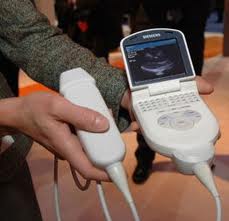
2. Dehydrated blood products such as Resusix(TM) can be stored for long periods of time in battlefield conditions and offer immediate plasma therapy to wounded soldiers to stop them from going into shock or bleeding out before their wounds can be tended to.
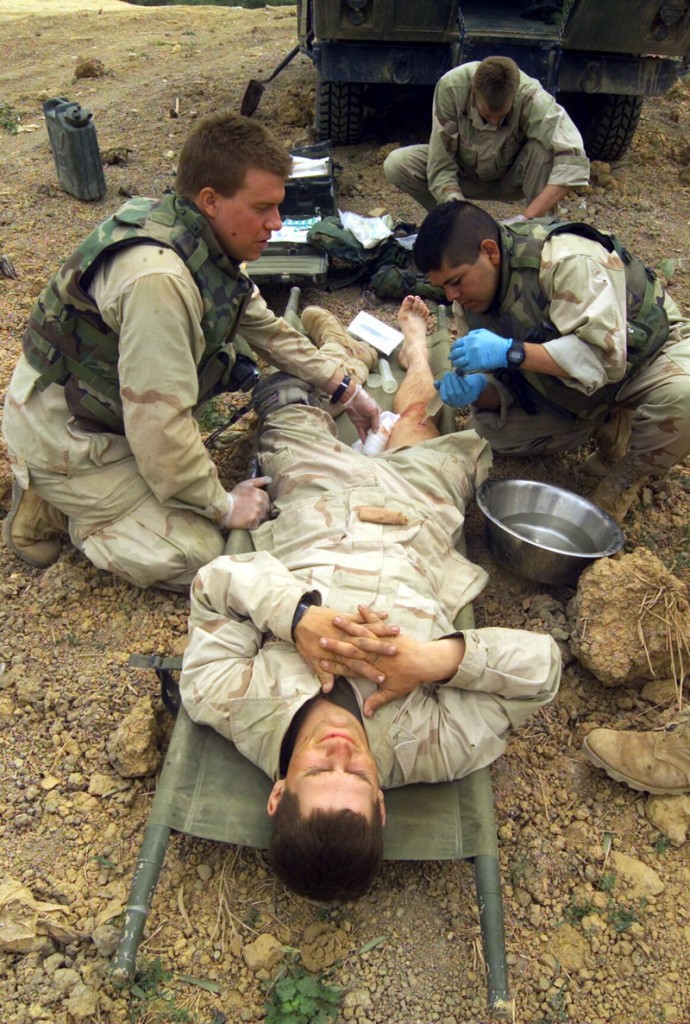
3. Use of waterjet technologies like the Versajet (TM) for debridement of wounds prior to surgical repair. Waterjets are more effective than scalpels in cleaning wounds.
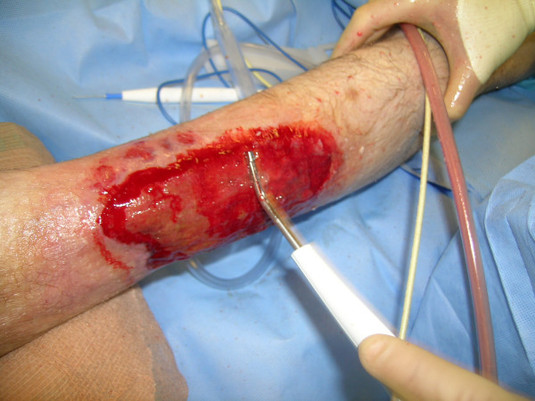
4. Using the toxicity of silver contained in bandages and dressings to reduce post-operative infections. There is controversy around this technology with some studies showing that silver, although toxic to microorganisms provides only a temporary advantage as the bacteria adapts to its presence.
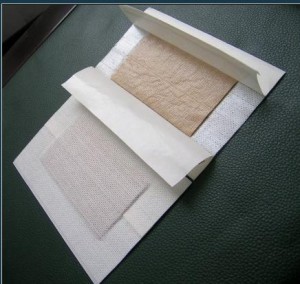
5. Topical negative pressure (TNP) suction devices for draining wounds for reduced swelling and faster healing.
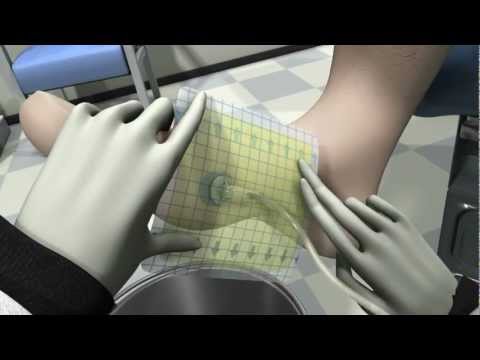
6. Development of extracellular inert matrices from pigs, sheep and other animals that act as a lattice or scaffold for the regrowing of damaged organs or muscles. There is no rejection from an inert xenograft because it contains no living cells. The regrown muscle means limbs that may have been amputated in the past can be saved.
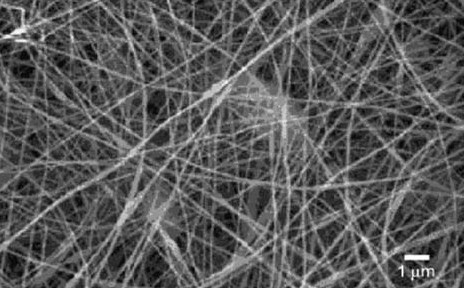
7. Robotic prostheses that provide sensory response for the wearer and motor skills functionality.
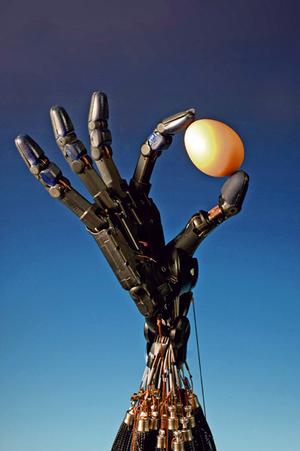
8. Exoskeletons and orthotic supports such as the Intrepid Dynamic Exoskeletal Orthosis (IDEO) that provide mobility for those who have suffered debilitating lower limb or spinal cord injuries.
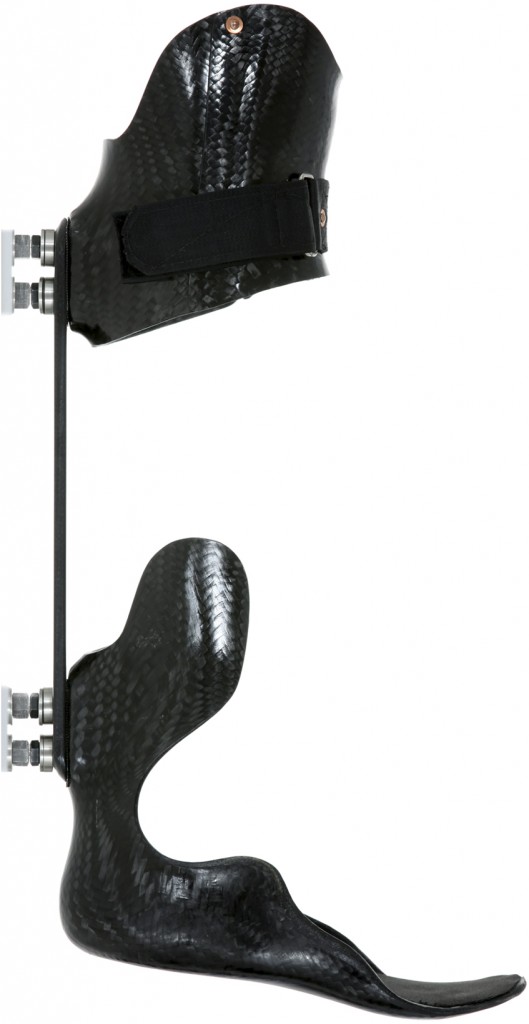
9. New “brain training” treatment strategies for concussion and traumatic brain injury (TBI).
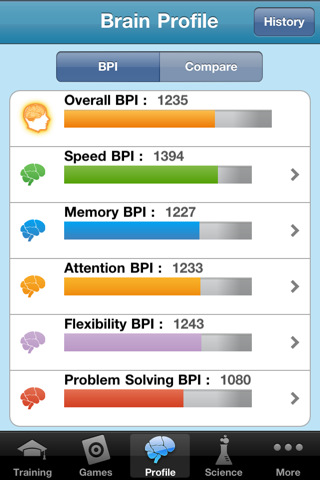
Biomedical Advances from Tomorrow’s Battlefields
The blurring of lines between biomedical advancement and military medical technology has become more apparent as organizations like DARPA invest in projects with both domestic and battlefield requirements.
What will we see throughout the remainder of the century? Here’s a shopping wish list of medical technological advancements we are beginning to see or expect will be part and parcel of medical treatment.
- Brain-computer interface
- Care-giving robots
- Regenerative medicine to regrow organs and body parts
- Non-needle drug delivery
- Neural Stimulation technology to speed up recovery from brain injuries or improve intellectual or physical performance
- Personalized drugs
- Further advancements in robotic surgery
- DNA repair including introduction of genes from other animals to enhance human performance
- Biostasis and cryogenic sleep
- Robotic-delivered medical services
- Instant pain relief
- Biosensor implants for monitoring and enhanced sensory perception
- Bionic implants to improve strength
- Bionic limbs
- Development of artificial immune systems and drugs to cure any disease

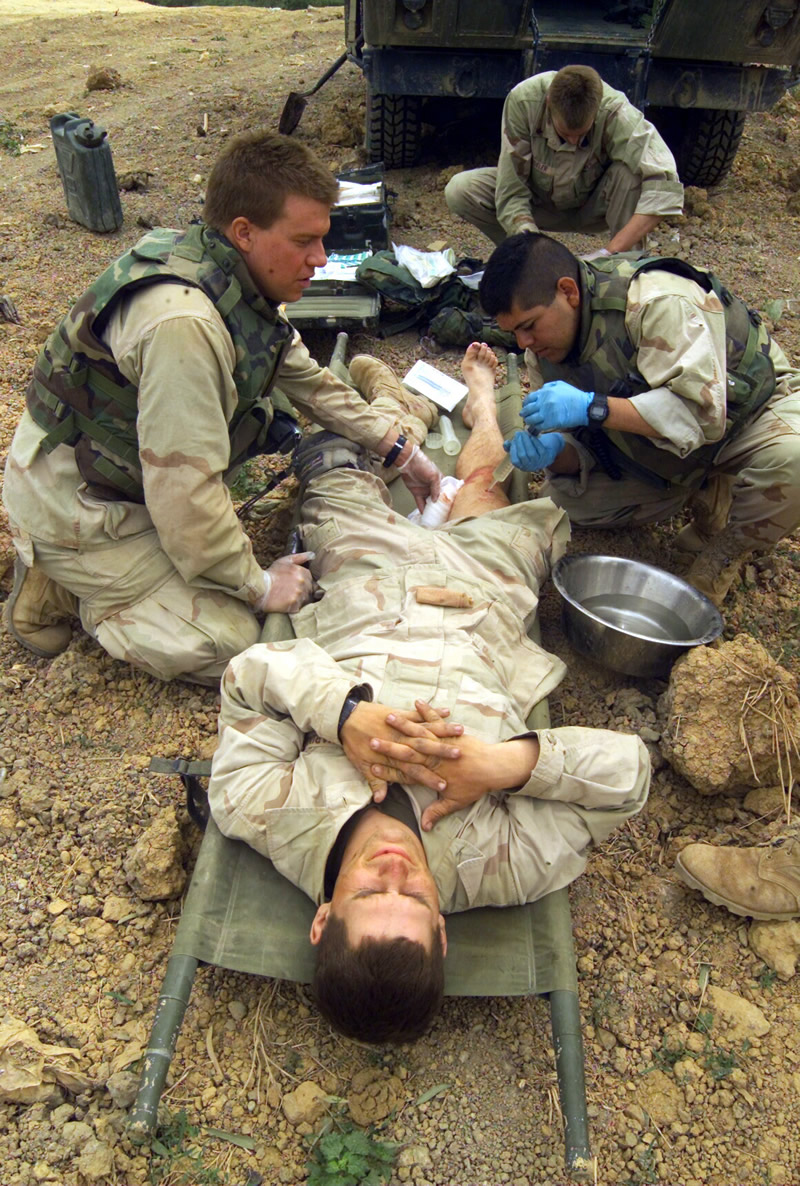














Having the technology in battlefield trauma care may lead to cutting-edge discoveries in the diagnosis, treatment and enhanced follow-up care for wounded troops.